Everybody who loves tasty food, history, culture, wine, and breathtaking scenery should add Tuscany to their bucket list. That’s why we’ve prepared a brief guide to help you organize your trip to Tuscany, this glorious Italian region.
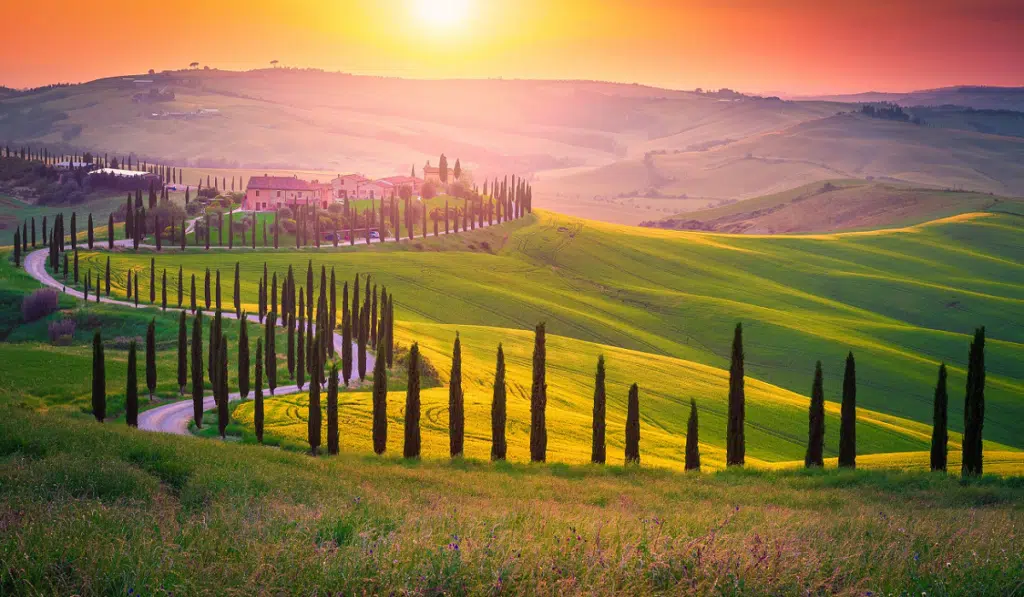
©citalia.com/shutterstock-1613838031
Our website includes affiliate links. So, remember that we may receive commissions when you click our links and make purchases. Please read our legal disclaimer document for more information about our Affiliate disclaimer and other disclaimers like the Fair-Use disclaimer.
Why Tuscany?
Tuscany, Italy, is a unique and captivating vacation destination. Its UNESCO heritage cities, picturesque countryside, majestic mountains, inviting beaches, and celebrated culinary traditions offer a rich cultural experience. The region’s significant role in the Italian Renaissance adds a historical charm. Whether you’re an art enthusiast, a history buff, a foodie, or a nature lover, Tuscany’s diverse offerings cater to every traveler’s interests.
Where is Tuscany
Tuscany is conveniently located in central Italy bordered by Liguria, Emilia-Romagna, Marche, Umbria, and Lazio. This strategic location offers diverse attractions, including fortified hilltop towns, beaches, mountains, and hot springs. Read on to get ready to start your exploration!
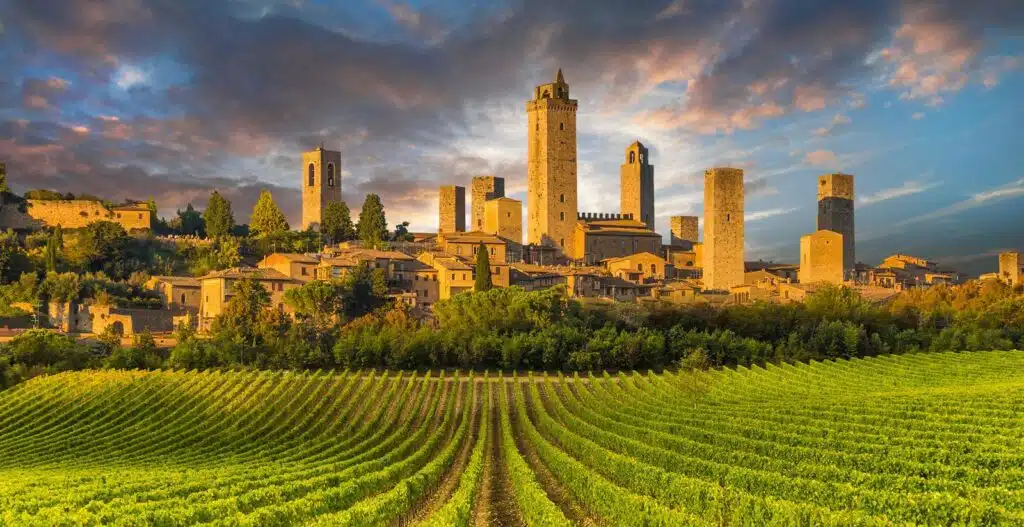
©borgosanluigi.it
The best time to visit
When planning your trip to Tuscany, it’s crucial to consider the best times to visit. Late spring (May) and early fall (September) offer ideal weather, fewer crowds, and lower prices. While challenging due to the heat and crowds, summer can still be enjoyable with meticulous planning. Winter, the least busy season, provides affordable accommodations and car rentals, but the weather can be chilly and unpredictable. Careful planning ensures a memorable Tuscany experience regardless of the season.
How long to spend here
Tuscany offers more than just Florence and the Chianti hills. It has many historic sites, art towns, and a stunning coastline with two beautiful islands. Getting around is accessible by train or car, and good public transit connections exist. To truly appreciate Tuscany, take your time, especially in Florence, which deserves at least two days.
To fully appreciate Tuscany, spend at least five days there. Within seven days, you can visit Florence, Chianti, Siena, and the hilltop towns of Val d’Orcia. With ten days, you can explore the region more thoroughly, including beach hopping along the Tuscan coast and visiting additional attractions.
How to get to Tuscany
So, how do you start your trip to Tuscany? Firstly, getting to Tuscany is convenient with a variety of transportation options:
- By plane: Two main airports in Pisa and Florence connect to Italian, European, and international airports. Smaller airports are also available.
- By car: Four highways connect Tuscany to Italy and Europe, providing access to many Tuscan cities.
- Bicycle: Environmentally friendly options include bikes suited for hills, e-bikes, and city bikes.
- By train: Multiple daily departures from Florence to other Tuscan cities. Italy’s main railway line connects Tuscany to major European cities.
- Taking a ferry: You can arrive in Tuscany from Sardinia, Sicily, or Corsica and go into Livorno.
It’s recommended that you book tickets directly with the service provider. Alternatively, you can use the Omio aggregator to compare routes and prices for trains, buses, flights, and ferries.
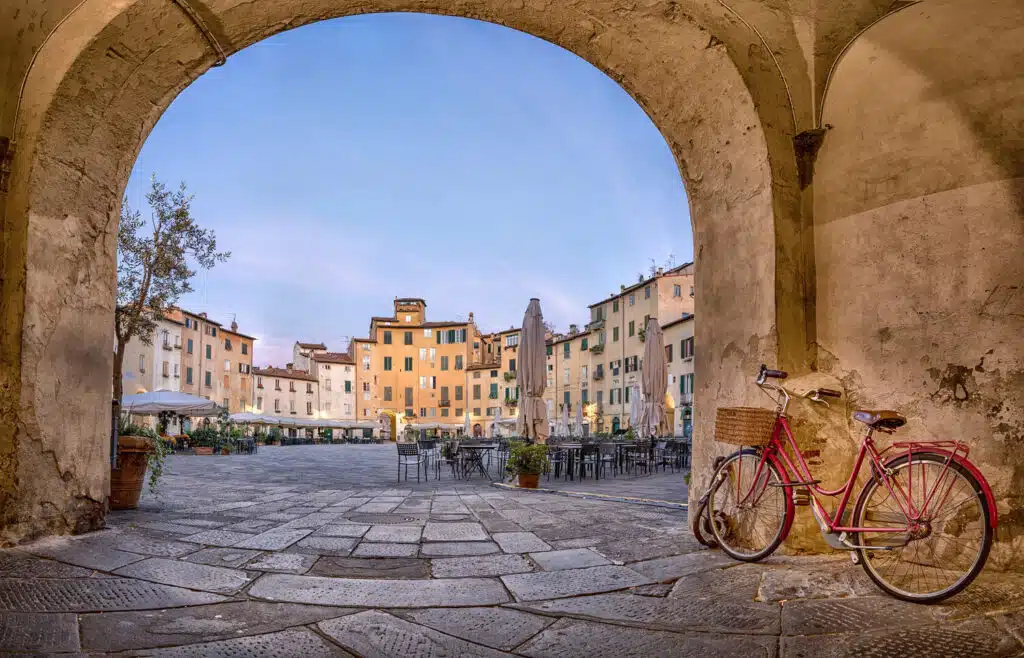
©AdobeStock
Getting around in Tuscany
Renting a car & driving in Tuscany
Renting a car in Tuscany is easy. You can find rental car offices in major cities and at the airports. The daily price for a manual-transmission compact car is usually around €30. Driving in rural areas is stress-free, but cities and hill towns can be more challenging. For the largest selection of vehicles and the best prices, rent in Florence or Pisa. You can also rent in Siena, Arezzo, Chiusi, or Livorno if you are arriving by cruise. I recommend using DiscoverCars to check prices and book.
Road conditions
“Most secondary roads in the region are two-lane country roads, which might only sometimes be perfectly paved. Medieval towns and villages have narrow and winding roads within their centers. These streets are mostly uphill and can be challenging to navigate. They are usually one-way roads, but this isn’t always the case, so you might have to stop, pull over, and let the passing car go before you can continue driving.”
Manual transmission cars
In Italy, driving manual transmission cars is still popular, so if you are not used to them, opt for an automatic transmission when booking your rental car (note that the price might be higher).
ZTLs – traffic-limited areas
Specific town centers, particularly historic ones, feature limited traffic zones (ZTL) accessible only to residents. Entering a ZTL area without authorization will likely result in a fine. Always be vigilant for signs indicating the presence of ZTL areas.
At the entrance(s) to the town, you will encounter a “no traffic” or ZTL sign, clearly indicating when you are not permitted to continue driving in your car.
Parking
When visiting small towns, it can be challenging to find parking, especially in medieval areas. However, there are usually municipal parking lots outside the medieval walls, which may require a small fee. When parking on the street, be mindful of the strip colors: white means free parking (unless otherwise specified on street signs), blue means paid parking, and yellow means no parking. Look for parking meters along the curb to pay for parking.
International Driving Permit
It’s important to note that if you plan to drive in Italy, you must have an International Driving Permit (IDP). While some online sources may suggest it’s unnecessary and rental agencies often don’t ask for it, the lack of an IDP can result in a fine if the police stop you. Ensure an IDP is present before driving in Italy to avoid legal issues.
Public transportation in Tuscany
Tuscany’s public transit system is flexible, with trains and buses connecting cities and towns. For major cities like Florence, Siena, and Pisa, traveling by train is convenient. However, having a car is the most convenient option if you want to explore the countryside, coast, or smaller towns. Public transportation only covers rural areas and is often slow and indirect for reaching specific destinations. You can use the Autolinee Toscane website or the At Bus app to plan your trips and purchase tickets. And Mugello.
Train travel
When traveling by train in Tuscany, note that many small towns, such as San Gimignano, don’t have train stations. You’ll need to reach them by bus or train. Trains between popular destinations and big cities typically depart every hour. Italy has three types of trains: high-speed Trenitalia Frecce fleet, Intercity trains, and slower Regionale trains. For traveling within Tuscany, you’ll mostly rely on Regionale trains, which don’t require seat reservations. You can purchase tickets at the train station or on the official Trenitalia website/app. Additionally, Italo Treno operates high-speed trains on some of Italy’s most heavily traveled routes.
Validating tickets
If you buy a physical ticket at the train station, you must validate it before boarding. Use dedicated machines at the station or ask the ticket office. Failure to validate may result in a fine. Website-purchased tickets don’t need validation; show them on your phone when the conductor asks.
Cost of tickets and booking in advance
Trenitalia train tickets can cost as little as 3€ for local travel and 50€+ for longer-distance, high-speed train rides. Long-distance tickets are cheaper if booked well in advance. There is no need to buy in advance for short routes, but it’s advisable for holidays or busy times to ensure you get a seat.
Bus travel
In Tuscany, public buses connect cities to smaller towns and villages, offering cheaper tickets than trains (as low as 1.20€). You can buy tickets at local kiosks and train stations and onboard. Leading bus companies are Autolinee Toscane, Sitabus, Tiemme, and Flixbus. Bus schedules change throughout the year. Google Maps is accurate with bus schedules. Buses run from around 6 am to 10 pm or midnight, with varying frequencies. You can buy local bus tickets at bus stations, “Tabacchi,” bars, cafes, and onboard. Book directly with the service provider or use the Omio website/app for longer-distance travel.
Taking ferries on the coast
To reach Giglio and Elba islands, take a ferry. Ferries to Elba depart daily from Piombino and Livorno by Toremar and Moby. Tickets cost around 20€ one way without a vehicle. Ferries to Giglio Island depart daily from Porto Santo Stefano by Toremar and Maregiglio, and a one-way ticket costs around 15€ without a car. Non-residents cannot bring vehicles to the island during high season.
Taxis and ride-sharing apps
In Italy, ride-sharing apps are not allowed, so taxis are the only option. Taxis are available at airports and train stations, but you may have to wait in line. Another option is to look for local taxi companies online and call to book a ride.
Famous Carnival in Viareggio
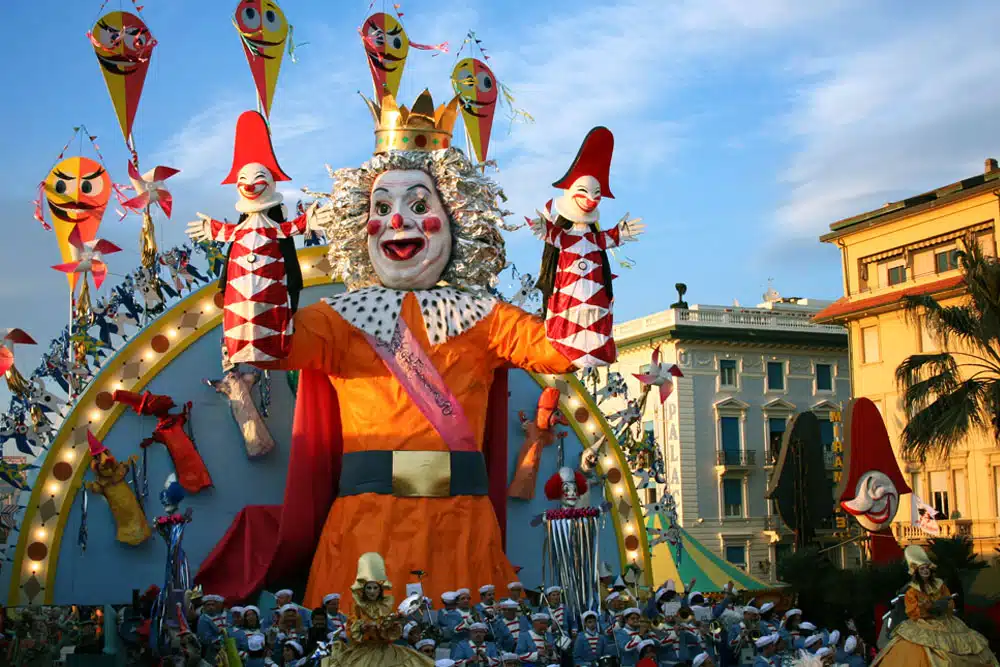
©mtsitaliatravel.it
By car
Visitors can use car rental services in major cities and airports. Tuscany offers car-sharing, including electric cars, with access to limited traffic zones and free parking.
Bicycle
Bicycles are an eco-friendly way to travel and enjoy the scenery. You can choose bikes designed for hills, e-bikes, and city bikes. Some cities offer bike-sharing services. For info on transporting bikes on public transportation, visit Trenitalia and Gest-tramvia websites.
Where to stay in Tuscany – the best bases
If you plan to stay in Tuscany for over three days, splitting your time between different bases is best to minimize travel time. For shorter stays, especially if it’s your first time in Tuscany, it’s recommended to base yourself in Florence. Florence offers a wealth of world-class attractions and serves as the central train hub for all of Tuscany.
Siena is an excellent base for exploring the Chianti and Val d’Orcia regions, but having a car is essential due to limited public transportation. If you prefer the countryside, the province of Siena offers picturesque landscapes, wineries, and charming accommodations.
The Maremma coast towns of Grosseto, Orbetello, Follonica, and Porto Santo Stefano are charming coastal destinations. Porto Santo Stefano, in particular, is known for its stunning beaches and coves, making it an excellent place for scenic walks in nature. Due to limited public transportation, having a car is necessary to experience the Maremma Coast fully.

©shutterstock_766958938
Average travel costs
Tuscany is rather pricey compared to other regions in Italy. However, this shouldn’t be a surprise as it is a premier tourist destination that welcomes millions annually.
Here are some rough prices for typical expenses:
- A night at a hotel: 80€ to 150€
- An average meal: 15€ for daily lunch specials (typically a main dish, a drink, and coffee or dessert), and 20 to 50 euros for dinner, depending on how fancy the place is and whether you want wine and multiple courses.
- A glass of wine: 3€ to 9€
- A coffee: 1-2 euros for an espresso or cappuccino at a non-touristy bar/cafe
- Renting a car: 30€ per day (potentially much more in the high-season, or if you need an automatic)
- A taxi ride within a city/town: 10€ to 25€
- Short-distance bus/train ticket: 3€ to 10€
- Long-distance bus/train ticket (but still within the region): 10€ to 25€
- Entrance tickets: 0€ to 25€
- There is a wide range of costs here. Local museums or lesser monuments and attractions usually cost less than 10 euros, while visiting places like the Accademia Gallery, Uffizi, Siena Duomo Complex, and other premier destinations can cost around 20 euros.
- Wine tastings at a winery: 10-20 euros (this usually includes multiple tastings and some light snacks)
- Bike/E-bike rental in the countryside: 50 to 100 euros for the day
- Guided tours (private and group):
- Half-day private guided tour: approximately 250 euros
- Full-day private tour: 400-600 euros.
- Small group tours: 40-80 euros per person.
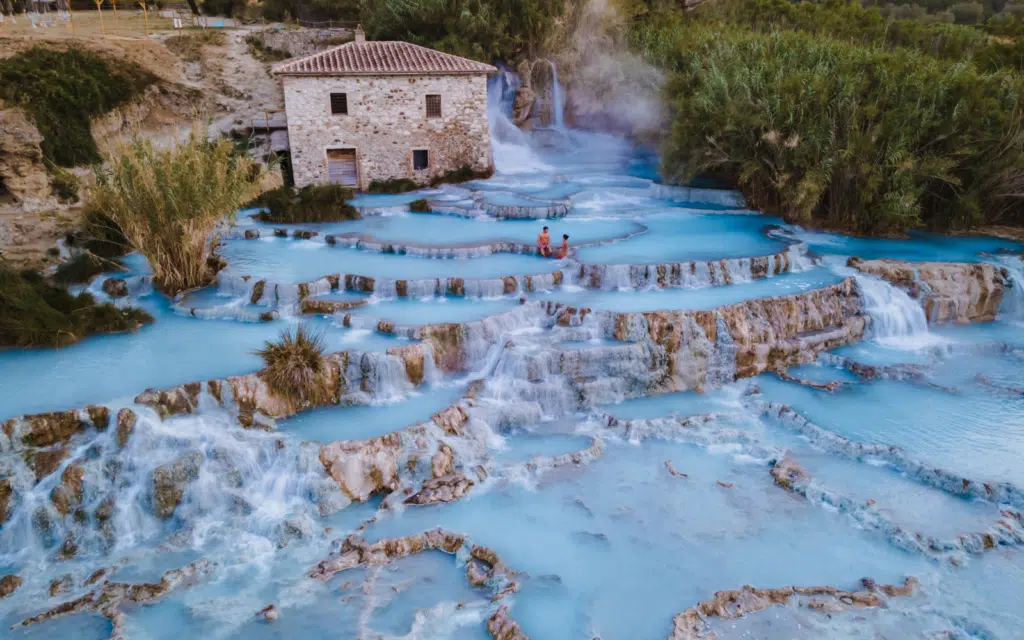
©Baarssen via CanvaPro
Paying for things and using credit cards
Credit cards
In Italy, you can pay with a debit/credit card and cash. You can use your card to pay in most places in Tuscany. Just note that some smaller bars can ask you to pay cash if you consume a meal that costs less than 5€.
So it is advisable always to have some euros in your wallet. ATMs are available in every town, but a fee might be charged for withdrawing money.
Tipping
Tipping is not customary in Italy. However, foreigners (especially North Americans) expect it, and hospitality workers appreciate it.
You can only tip in cash, and how much to tip depends on you. Generally, it would help if you tipped a few euros for a short and undemanding service (like a drink at a bar). In this case, you usually leave the change if you pay cash. It would help if you tipped more for ongoing services (like a week-long cleaning service).
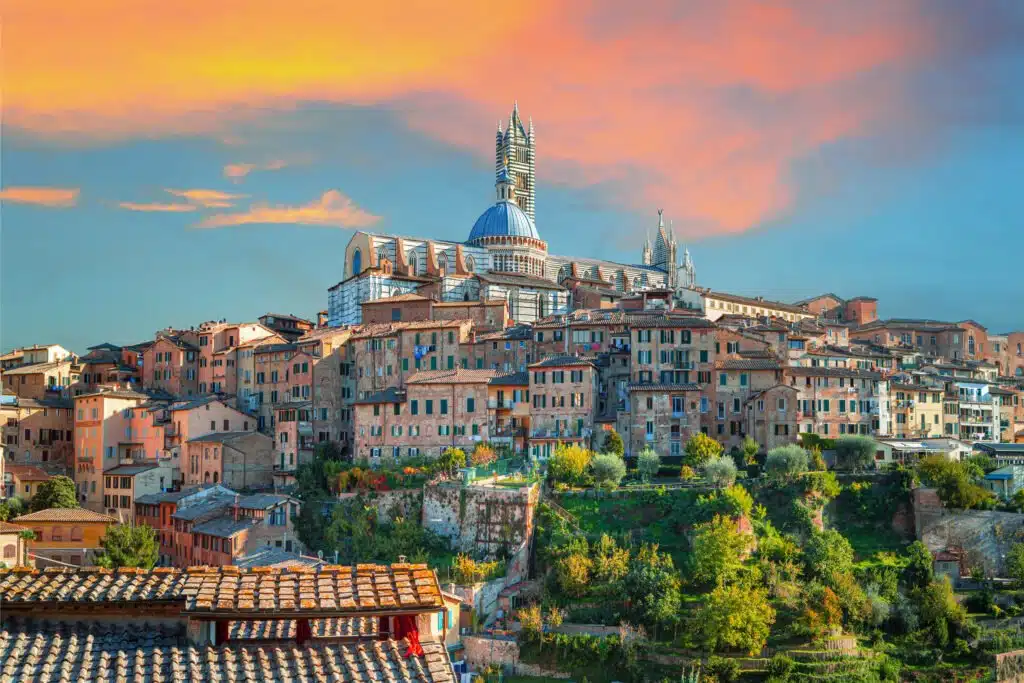
©touristjourney.com
What to do and to see on your trip to Tuscany
Tuscany is renowned for its association with Florence, wineries, and charming Renaissance towns like Cortona, San Gimignano, Montepulciano, and Lucca. The region offers scenic drives, rural countryside, and idyllic beaches in the Maremma region. Other attractions include the Chianti region, the Val D’Orcia, and the islands of Elba and Giglio. Visitors can enjoy wine and olive oil tastings, hot springs, truffle hunting, and various outdoor activities. Tuscany is home to beautiful towns like Florence, Siena, Pisa, and Lucca, as well as medieval cities in the Val d’Orcia and the island of Elba.
Take a look at
Photo credits:
Feature photo Credits: tuscanyintour.com


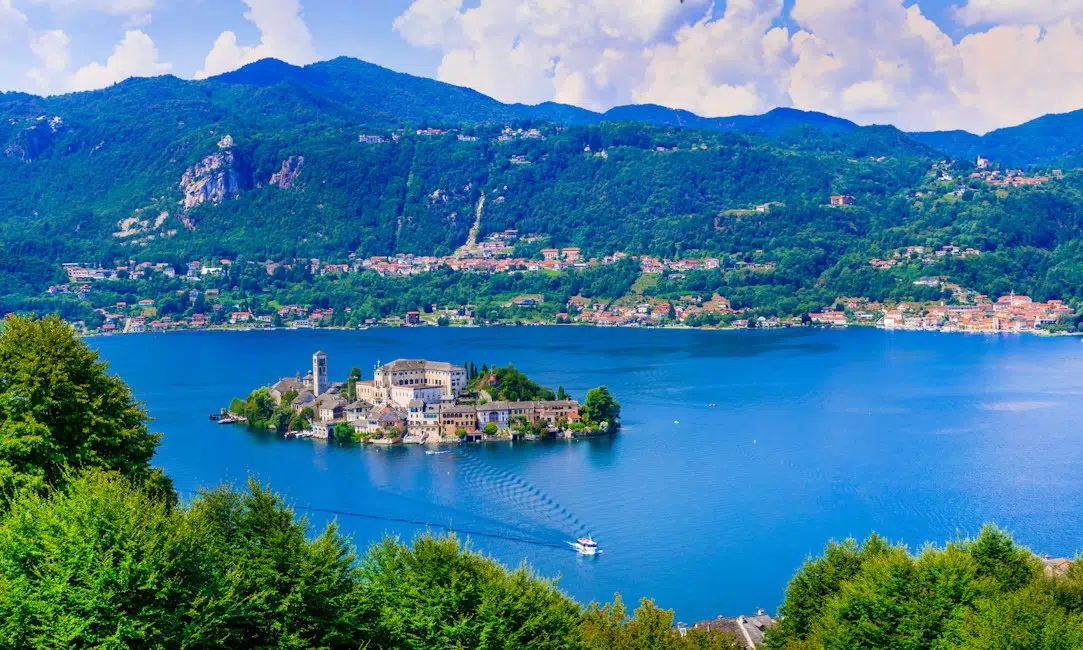

Comments are closed.